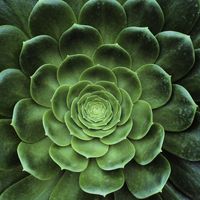Dwarf Lilac Trees – What Is A Meyer Lilac


What is a Meyer lilac? Native to China and Japan, Meyer lilac tree (Syringa meyeri) is an attractive, low-maintenance lilac tree with a rounded, broad shape. Meyer lilac is a heavy bloomer that produces masses of small, fragrant, tube-shaped flowers in shades of pinkish lavender and pale purple every spring. The glossy, ruffled leaves turn yellow-green before dropping from the tree in autumn.
Meyer lilac trees are also known as dwarf lilac trees or compact Meyer lilacs because they are smaller than most lilacs, reaching a mature size of 4 to 8 feet (1 to 2.5 m.) tall and 6 to12 feet (2 to 2.5 m.) wide. These dwarf lilac trees work beautifully as specimens, or in mass plantings, borders, or hedges.
Growing Meyer lilacs is suitable in USDA zones 3 through 8. Like all lilacs, Meyer lilacs won’t bloom in warmer climates. Read on to learn more about dwarf lilac trees.
Growing Meyer Lilacs: 7 Tips On Caring For Dwarf Lilac Trees
- Dwarf lilac trees prefer moist, well-drained soil, but will tolerate poor, dry or compacted soil, as long as it isn’t soggy.
- Look for a spot where the tree will be exposed to full sunlight for most of the day. The soil should be well-drained and not soggy.
- Water your compact Meyer lilac regularly during the first couple of years, especially during hot, dry weather. Thereafter, Meyer lilac trees are drought-tolerant and occasional irrigation during the summer is sufficient.
- Feed dwarf lilac trees every spring after the first growing season using an all-purpose, granular fertilizer.
- Spread a layer of mulch around the shrub every spring to conserve moisture and keep the ground cool.
- Prune compact Meyer lilac lightly after blooms fade in late spring. Major pruning should wait until winter when the tree is dormant.
- Like with most lilacs, deadheading Meyer lilac trees isn’t required but will keep the shrub looking tidy.
Sign up for the Gardening Know How newsletter today and receive a free copy of our e-book "How to Grow Delicious Tomatoes".

A Credentialed Garden Writer, Mary H. Dyer was with Gardening Know How in the very beginning, publishing articles as early as 2007.